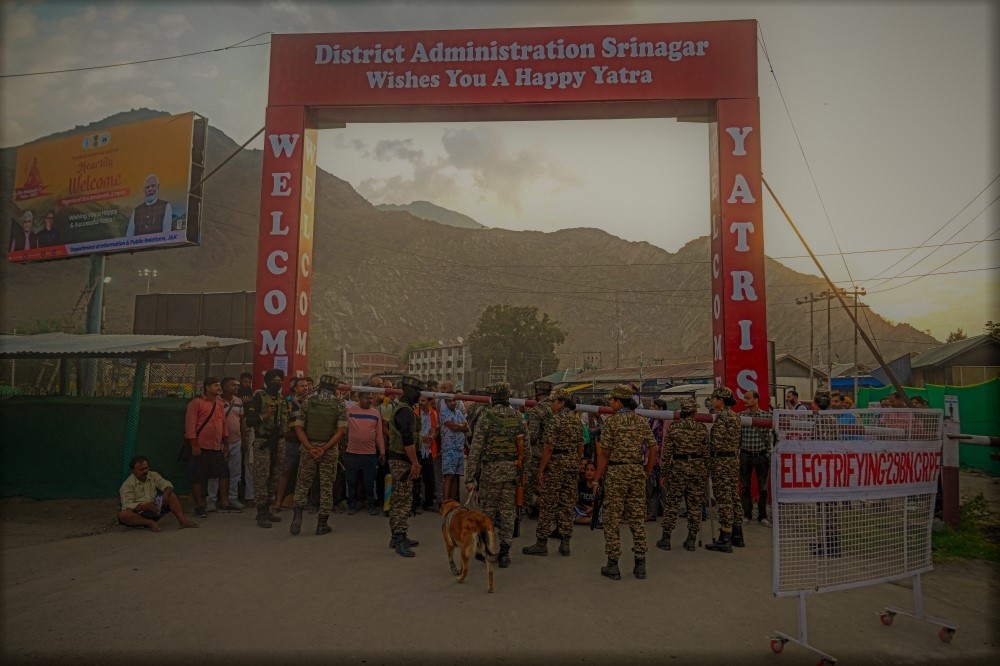PAHALGAM (India), July 3 — As the early morning mist clears over the lush green valleys of Kashmir, hundreds of Hindu pilgrims begin their spiritual journey to the sacred Amarnath Cave. Their destination lies hidden deep in the forested Himalayas — a natural ice formation revered as a manifestation of Lord Shiva.
But this year’s pilgrimage is unlike most. Just months ago, on April 22, tragedy struck near Pahalgam when gunmen opened fire, killing 26 mostly Hindu tourists. The attack deepened tensions between India and Pakistan, both nuclear-armed neighbors with a long and bitter history over this contested region.
Despite the somber backdrop, faith remains unshaken.
“There is no fear in my heart,” said Muneshwar Das Shashtri, a pilgrim who traveled from Uttar Pradesh. “Our army is with us. They are watching over every step we take.”
India has left little to chance. Over 45,000 security personnel now line the pilgrimage route — a multi-layered shield of troops, bunkers, armored vehicles, and surveillance drones. At every checkpoint, faces are scanned, IDs verified, and convoys roll under tight protection.
The base camp in Pahalgam resembles a fortified town. Razor wire fences, sandbag posts, and alert soldiers define the landscape. Yet inside, the air is filled with chants, the aroma of free meals from community kitchens, and the resolute spirit of devotion.
Pilgrims, many making the arduous journey for the first time, walk for days across steep trails and cold winds to reach the ice cave, perched 3,900 meters above sea level. Radio-frequency cards track their location, ensuring constant connection in case of emergency.
“I’ve come for darshan of baba,” said Ujwal Yadav, 29, his voice calm. “Yes, there was an attack, but I have no fear. This journey means everything.”
Though authorities say public confidence is gradually returning, the number of registered pilgrims has dipped slightly this year. Still, the magnitude of the event is far beyond what it once was — from a few thousand local devotees in the 1980s to over half a million in recent years.
India’s government continues to promote the Amarnath Yatra, both as a spiritual movement and a symbol of national unity. But in a region still grappling with decades of armed insurgency and deep mistrust, it’s not just a religious journey — it’s also a journey through history, politics, and the enduring power of faith.
While rebel groups have declared the pilgrimage itself is not a target, they have warned against it being used as a tool to assert dominance. Memories of the 2017 attack that killed 11 pilgrims remain fresh.
Authorities say they’ve arrested two men who allegedly sheltered the April attackers, and the hunt for the three main suspects continues.
Still, every step the pilgrims take — through forests, mountains, and security checkpoints — is a testament to something more powerful than fear.
“Faith,” one soldier at a checkpoint said softly, “moves them forward. We’re just here to keep the path safe.”
As the pilgrimage continues until August 9, the story unfolding in Kashmir isn’t just one of security and conflict — it’s one of resilience, belief, and the quiet strength of those who walk in devotion, no matter the shadows that surround them.




